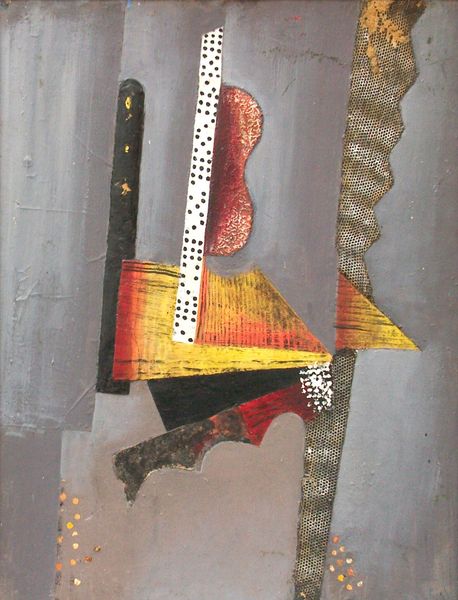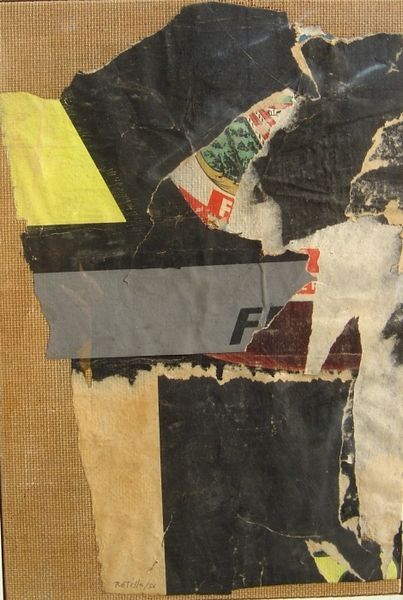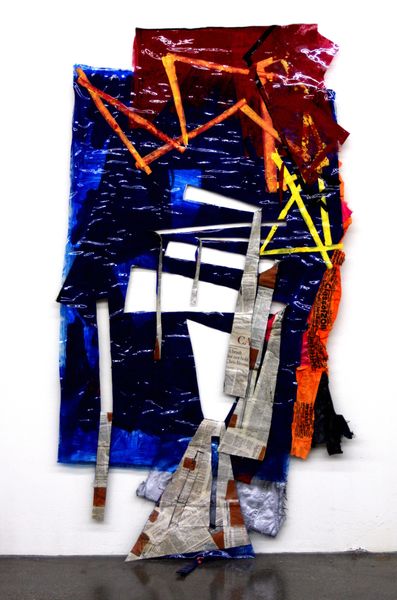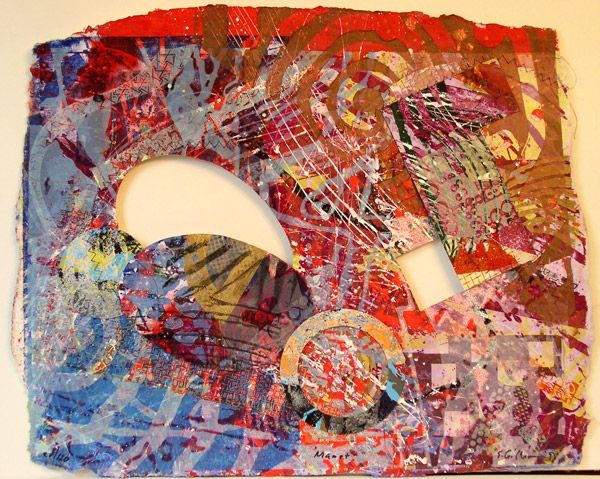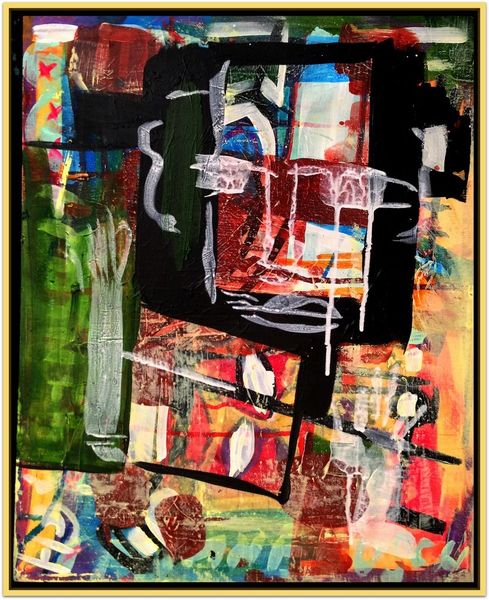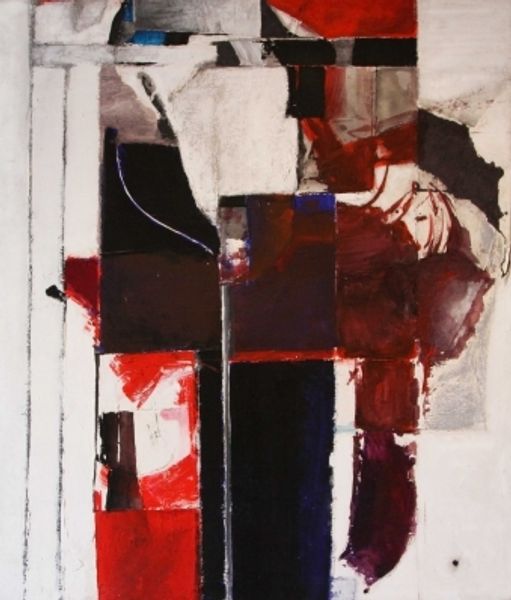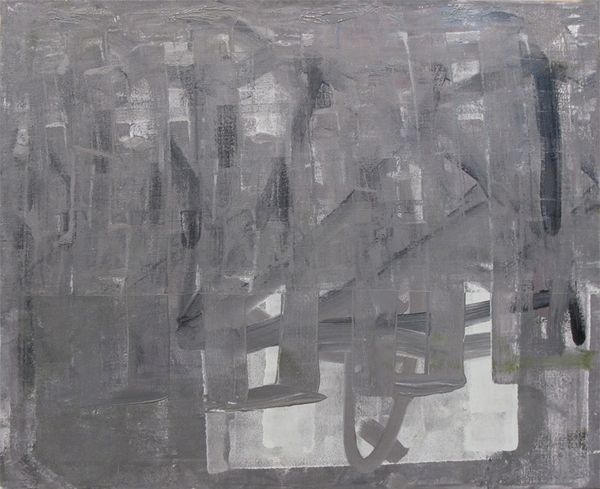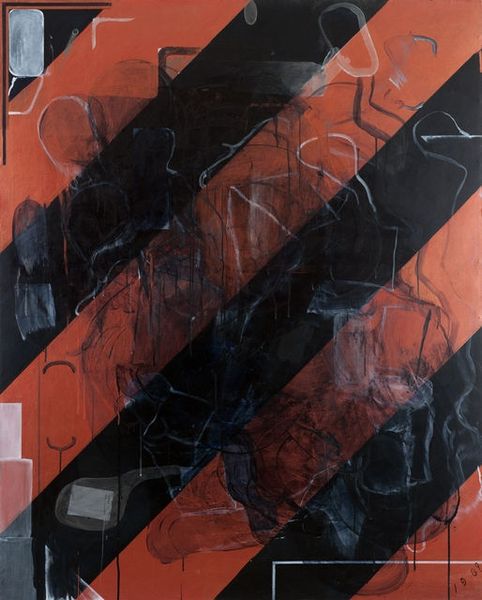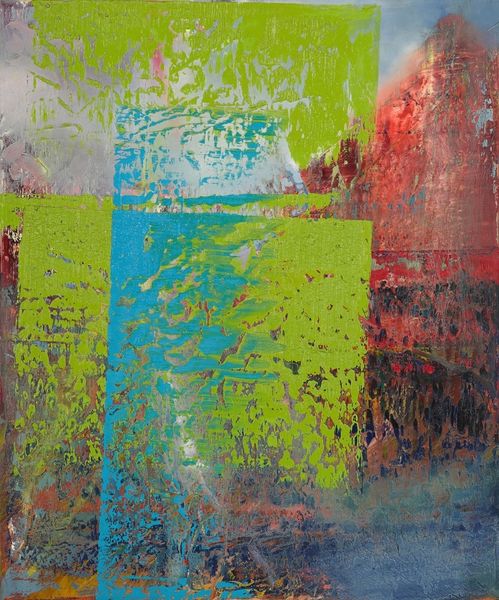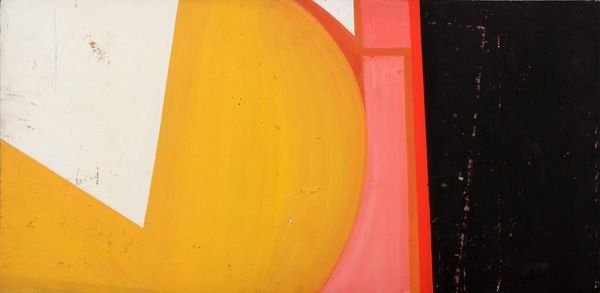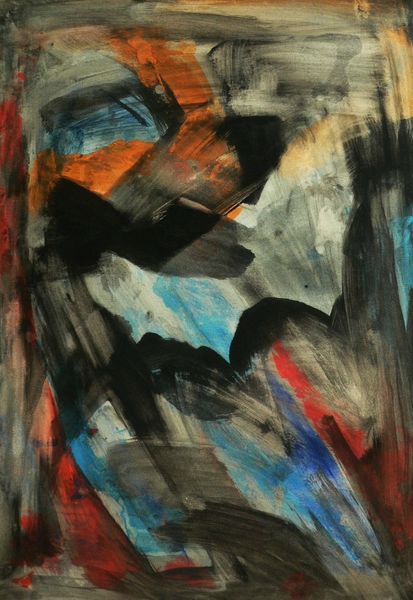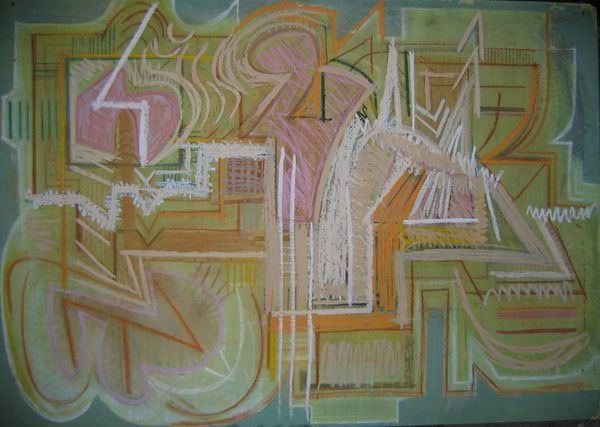
mixed-media, collage, oil-paint
#
cubism
#
mixed-media
#
collage
#
oil-paint
#
geometric
#
abstraction
#
modernism
Copyright: Public domain
Curator: Vilhelm Lundstrom’s "Composition I," from 1918, presents an intriguing mix of media, including oil paint and collage elements. Editor: Immediately striking is the piece’s muted, almost melancholy, palette and its textured surface; a clear embrace of Cubist abstraction. The geometric fragments seem to hover in a space that is neither entirely flat nor realistically deep. Curator: Lundstrom was part of a generation grappling with rapidly changing modes of production. We see evidence of this interest in his approach here: the rough texture of the canvas, juxtaposed with pasted elements, forces us to consider the means of its making. The collage disrupts any easy illusionism. Editor: But the fragmented forms also speak to a fractured world, echoing the anxieties of the time. Doesn't the stark contrast of the cool greys against the bursts of red and yellow evoke a sense of disruption or perhaps even impending conflict? It has almost a warning embedded in its iconography. Curator: Possibly. However, I am interested in considering how this collage work fits within Lundstrom's artistic journey. It could be viewed as a rebellion against established aesthetic conventions. A democratizing approach, maybe even questioning the preciousness associated with painting. Editor: The dots. Look at how frequently Lundstrom deployed dots. Could this be the artist's fascination with patterns, as a universal visual language transcending cultural barriers? Are the forms mere aesthetic arrangements, or are they echoes of recognizable objects and experiences, translated through a personal symbolic lens? Curator: Interesting speculation. Perhaps, by embracing mixed media and seemingly mundane materials, Lundstrom aimed to dismantle established hierarchies. This move can be interpreted as an elevation of craftsmanship alongside more "refined" art forms. Editor: Indeed, each piece becomes a trace of a past event, charged with a cultural weight we decode to connect with our world. A beautiful, sobering reflection on a society grappling with its future. Curator: Precisely. Looking closer at "Composition I" unveils how Lundstrom challenged us to consider not only what art represents, but also how it's constructed, consumed, and circulated.
Comments
No comments
Be the first to comment and join the conversation on the ultimate creative platform.
